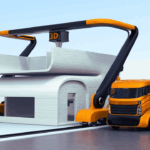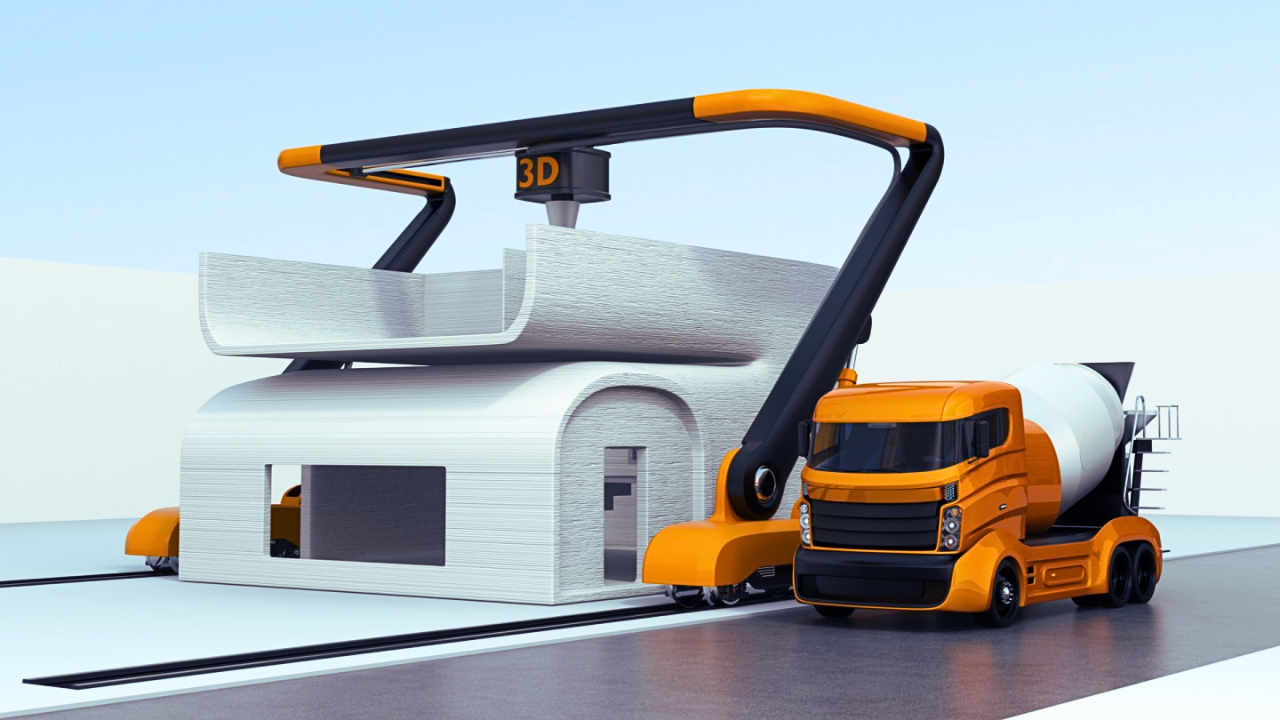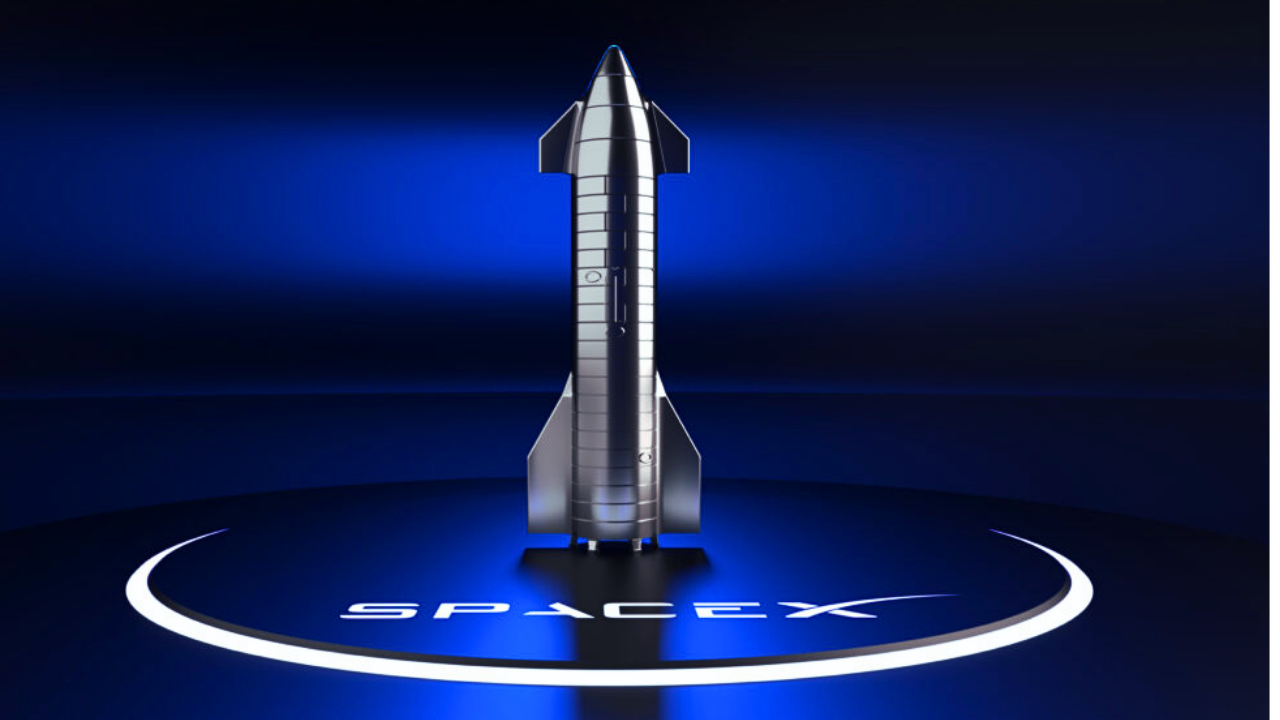The real estate industry is on the brink of a revolution, and at the heart of this transformation is 3D printing. This groundbreaking technology, while currently in its infancy and carrying a relatively high cost, has the potential to reshape the way we think about constructing

buildings.
In this article, we’ll dive deep into the world of 3D printing in real estate, exploring its current applications, future potential, and the myriad benefits it offers. Buckle up; we’re about to embark on a journey into the future of construction.
Understanding the Basics of 3D Printing in Real Estate
Before we delve into the disruptive potential of 3D printing in the real estate sector, let’s take a moment to understand the fundamentals of this technology.
At its core, 3D printing, also known as additive manufacturing, is a process where physical objects are created by depositing materials layer by layer, following a digital model. The process requires three key components: software with a digital design, hardware (the 3D printer itself), and raw materials.
| Component | Description |
|---|---|
| Software | Digital design software, like AutoCAD, used to create 3D models. |
| Hardware | The 3D printer itself, which brings the digital model into the physical realm. |
| Raw Materials | Various materials, including plastics and concrete, are used based on project requirements. |
Here’s a simplified breakdown of how it works:
- Digital Design: An architect or designer creates a digital model of the building they want to construct using specialized software.
- Layering: The digital model is then divided into layers, making it understandable for the 3D printer.
- Printing: The 3D printer reads the digital model and starts building the structure layer by layer, precisely following the design.
While the structures produced by 3D printing have, until now, been relatively simple, the technology’s potential for complex architectural feats is on the horizon.
3D Printing: Revolutionizing Affordable Housing
One of the most pressing challenges the world faces today is the shortage of affordable housing, particularly in developing countries like India.
3D printing has emerged as a potential solution to this crisis. Its disruptive nature isn’t limited to changing the way we build; it also addresses material consumption with virtually zero waste.
| Application | Description |
|---|---|
| Affordable Housing | Addressing housing shortages in developing countries, such as India. |
| Zero Waste Construction | Reducing material waste and environmental impact. |
| Retail & Warehousing | Transforming the way commercial spaces are constructed. |
| Industrial Real Estate | Revolutionizing the development of factories and warehouses. |

Impact on Different Real Estate Segments
The ripple effect of 3D printing is not limited to just residential buildings. Various segments of the real estate industry, such as retail, warehousing, and industrial spaces, are poised for compelling changes in demand and necessity.
Here’s how 3D printing could affect different sectors:
- Retail Spaces: Imagine retailers being able to 3D print custom storefronts or display units, optimizing their retail space for maximum appeal.
- Warehousing: 3D printing can revolutionize the way warehouses are designed and constructed, enhancing efficiency and storage capacity.
- Industrial Real Estate: Manufacturing plants and industrial facilities could benefit from the rapid and cost-effective construction methods offered by 3D printing.
The Dawn of a 3D Printing Disruption
In a world grappling with overpopulation and housing crises, innovation often emerges as the answer to seemingly insurmountable challenges. The birth of 3D printing in construction is a testament to humanity’s ability to overcome these obstacles.
Numerous companies and startups worldwide, including those in the Netherlands, the USA, China, and Russia, have embarked on the journey of harnessing 3D printing’s potential.

They are pioneering the construction of cheaper, more intricate, and more efficient buildings. What’s truly astonishing is the speed at which these innovations are happening, driven by two primary factors: speed and cost.
Speed
The speed at which 3D printing can construct buildings is nothing short of remarkable. Traditionally, a two-story building can take up to 6-7 months to complete using conventional methods. However, the advent of 3D printing has disrupted this timeline dramatically.
For instance, in 2016, a Chinese construction company called HuaSheng Tengda created a 400-square-meter, two-story house in a mere 45 days using 3D printing technology. This was a monumental leap in construction speed, hinting at the scope of disruption that lay ahead.

Cost
Cost is another pivotal factor driving the adoption of 3D printing in the real estate sector. Apis Cor, a San Francisco-based housing startup, collaborated with Russian company PIK Group to construct a 400-square-foot circular house in just one day. The astonishing part? The entire house cost less than $10,000 to build.
These 3D-printed homes significantly reduce material costs and waste management expenses. Moreover, they require minimal labor, machine procurement, and inventory costs. To further reduce costs, many companies are exploring sustainable materials and methods, making 3D-printed construction even more accessible.
Advantages of 3D Printing in Real Estate
As we continue to explore the disruptive potential of 3D printing in the real estate sector, let’s take a closer look at the numerous advantages it offers:
1. Facilitating Construction in Inaccessible Areas
3D printing’s ability to reduce the need for sprawling construction machinery and materials makes it a game-changer for building in remote and inaccessible areas. This could be a lifeline for regions with challenging terrain or limited infrastructure.
2. Enabling Complex and Customized Structures
Conventional construction methods often struggle with creating complex architectural designs. 3D printing, on the other hand, excels in this arena. Its precision and layer-by-layer approach make it perfect for constructing buildings with unique shapes and customizations.
3. Waste Reduction
One of the most significant advantages of 3D printing in real estate is its potential to eliminate construction waste. Traditional construction often involves cutting and shaping materials, leading to substantial waste. 3D printing, with its additive approach, significantly reduces waste generation, contributing to a more sustainable future.
4. Unprecedented Speed
The construction speed offered by 3D printing is unparalleled. What traditionally takes months can be accomplished in a matter of days with 3D printing. This rapid pace not only reduces project timelines but also has the potential to address urgent housing needs efficiently.
5. Affordable Housing
Perhaps one of the most critical advantages of 3D printing in real estate is its potential to make housing more affordable. By reducing material costs, labor expenses, and waste, 3D printing opens up avenues for providing quality housing at a fraction of the traditional cost. This could be a game-changer for addressing homelessness and housing shortages globally.
6. Environmental Benefits
3D printing in construction also offers significant environmental benefits. By minimizing waste and cutting back on carbon emissions associated with traditional construction methods, this technology can contribute to a greener, more sustainable planet.
The Future of 3D Printing in Real Estate
The beauty of 3D printing lies in its limitless possibilities. As more companies and innovators explore this technology, we can expect to witness multi-story buildings being constructed through 3D printing at an unprecedented speed and cost-efficiency.
The barriers of size and scope do not apply to 3D printing’s potential in the real estate market. With advancements in developed countries paving the way, it’s high time for Indian real estate players and stakeholders worldwide to seize the opportunities presented by this emerging trend.

In a rapidly urbanizing world with growing housing needs and environmental concerns, 3D
printing offers a ray of hope. It has the power to transform not only the buildings we inhabit but also the way we think about construction. It’s a technology that embodies the spirit of innovation and progress, and its impact on the real estate industry is only just beginning.
Frequently Asked Questions about 3D Printing in Real Estate
Now, let’s address some common questions about 3D printing in the real estate sector to provide you with a comprehensive understanding of this game-changing technology:
1. What is 3D printing in real estate?
3D printing in real estate refers to the use of additive manufacturing technology to construct buildings and structures. It involves creating physical objects layer by layer based on a digital design, drastically reducing construction time and waste.
2. How does 3D printing in real estate work?
The process starts with a digital design of the building, which is then divided into layers. A 3D printer reads this design and builds the structure layer by layer using raw materials. This method is highly precise and efficient.
3. What are the advantages of 3D printing in real estate?
Some of the key advantages of 3D printing in real estate include faster construction, reduced costs, the ability to construct complex structures, minimal waste generation, and the potential for affordable housing solutions.
4. Is 3D printing in real estate environmentally friendly?
Yes, 3D printing in real estate is environmentally friendly. It significantly reduces waste, carbon emissions, and the need for extensive construction machinery, making it a more sustainable construction method.
5. Is 3D printing in real estate cost-effective?
Yes, 3D printing in real estate can be highly cost-effective. It reduces material costs, labor expenses, and waste management costs, making it an attractive option for affordable housing and sustainable construction projects.
Takeaway
3D printing is not just a technology; it’s a potential game-changer for the real estate industry and beyond. As it continues to evolve and gain momentum, we can expect to witness remarkable transformations in how we build, live, and address critical global challenges like housing shortages and environmental sustainability.
It’s an exciting journey into a future where construction knows no bounds, and innovation reigns supreme.











